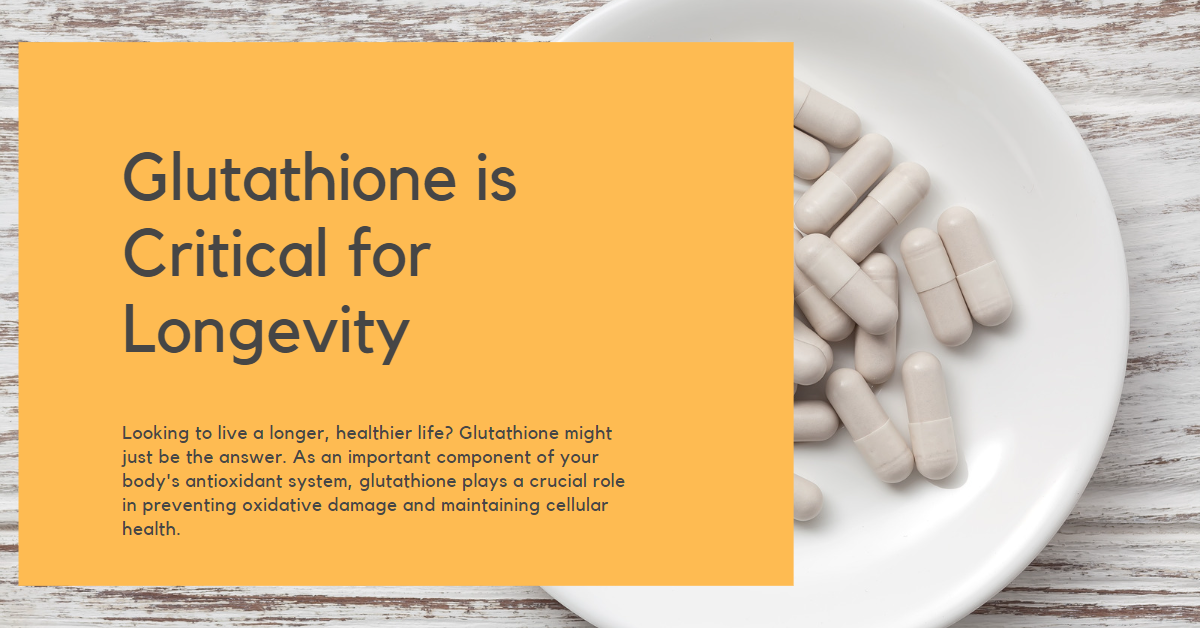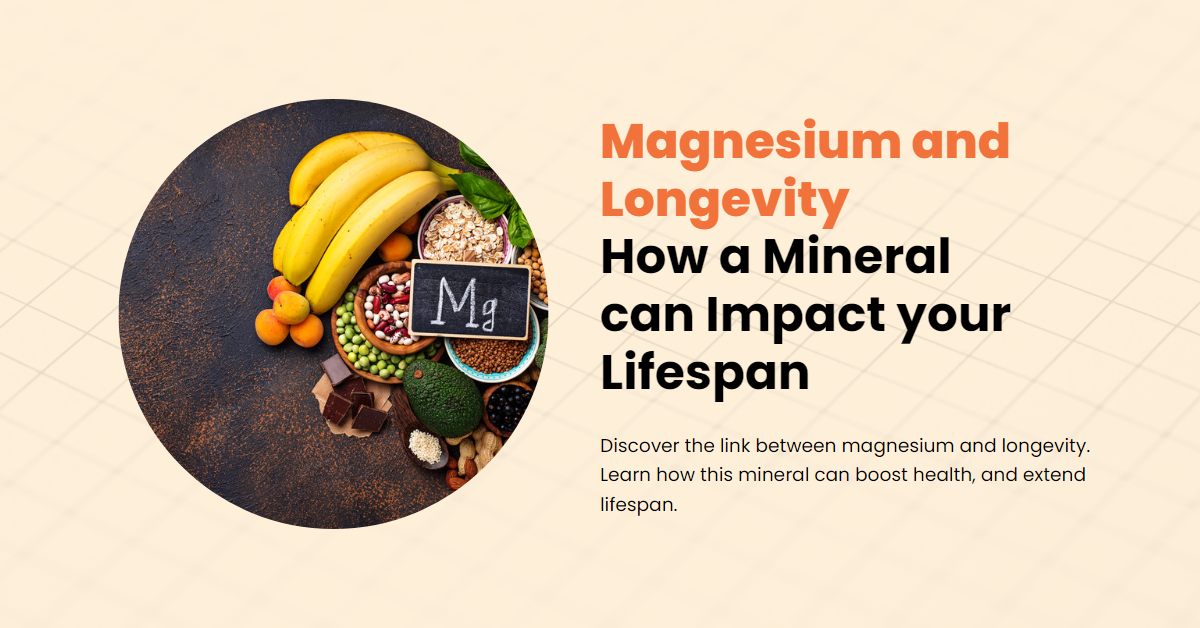Featured Publications
Dr. Blair has been featured in many scientific publications
Liposomal Hemp Extract For The Management of Cachexia
Background: The onset of cachexia, a body-wasting condition, is an ominous sign— it occurs in up to 80% of patients with cancer and is the ultimate cause of death in up to 20% of these patients. Moreover, cachexia can make treatment for cancer more difficult and less effective. With no approved treatment for cachexia, some patients have experimented with cannabis to increase their appetite. Findings on the use of cannabis as a treatment for cachexia have shown some promise; however, well-designed clinical trials of cannabinoids are necessary to provide guidance to both physicians and patients regarding formulation and dose.
Objective: The aim of this studyas to use a mouse model to examine the effects of a liposomal cannabinoid-containing hemp extract on cancer-related cachexia.
Method: Bagg Albino c mice were inoculated with colon 26 tumor cells and followed until they developed signs and symptoms of cachexia. Upon onset of cachexia, the mice received a single dose of either 0.2 mg or 1 mg of a delta-9-tetrahydrocannabinol-free (THC-free) liposomal hemp extract containing 20% cannabidiol (CBD) and other cannabinoids. A control group received no treatment. Another dose of 0.2 mg liposomal hemp extract was given after a few days to mice that failed to respond to treatment, or to mice that initially responded to treatment but began to lose weight again after stabilizing.
Results: Of the 7 mice who were given 1 mg liposomal hemp extract, 4 gained weight and survived. Of the 7 mice who were given 0.2 mg of liposomal hemp extract, 2 gained weight and survived. Only 1 of the 9 mice in the control group survived.
Conclusion: The findings suggest the beneficial effects of liposomal hemp extract in treating and, in some cases, reversing cachexia and improving survival in a mouse model. This study revealed promising results that should be replicated in human subjects to test if similar results are seen and to determine an optimal dose.
Absorption, Safety, and Detoxification Effects of Oral Liposomal Glutathione
The tri-peptide glutathione (cysteine-glutamine-glutamic acid) is one of the most important intracellular antioxidants in the body. It is assembled in the body from these individual amino acids. When the production of glutathione is faulty or overwhelmed by demand, oral supplementation of glutathione is a rational step for restoring the redox balance in the body. However, studies of oral glutathione supplementation have demonstrated poor absorption (as low as 0%) and uneven results. Delivering supplemental glutathione via liposomal technology is the logical next step, as liposomes not only significantly increase the absorption of poorly absorbed substances, they also protect the nutrient from degradation by stomach acids and enzymes. A clinical study was undertaken to assess the effect of liposomal glutathione on blood levels and detoxification processes. Seven individuals ingested a standard glutathione powder, then after a one-week washout took a liposomal glutathione liquid (CELLg8®). Peak blood glutathione was compared, with the liposomal preparation resulting in 20-times higher blood levels on average. In another small, open-label study, seven healthy individuals took 750 mg of liposomal glutathione liquid (CELLg8®) twice daily for 30 days. Blood mercury, creatinine, and bilirubin were assessed at baseline and on day 30. Bilirubin, a marker of liver health, was significantly lower in three of the four participants, while bilirubin in the fourth individual stayed the same. Creatinine, a marker of kidney function, was also improved in three of four people. Blood mercury levels decreased an average of 39% over 30 days of supplementation. These studies show an enhanced absorption profile of liposomal glutathione. The non-liposomal powder did not change the blood level, while supplementing with the CELLg8® glutathione liquid resulted in a blood level that was 22% higher than baseline. In addition, liposomal glutathione was safe and caused a clinically significant 39% decrease in blood mercury with 30 days of supplementation.
Companies Blogs & Articles Pharmacokinetic Analyses of Liposomal Multivitamin/Mineral Formulations
Ingestion of a liposomal MVM supplement differentially affects the concentrations of
some vitamins and minerals appearing in the blood, volume distribution, clearance rates, and elimination from the blood compared to a non-liposomal MVM supplement. These findings are important because they are the first to demonstrate that coating a MVM supplement with liposomes can affect the PK profile of several vitamins and minerals within the MVM supplement and thereby influence nutrient bioavailability. With additional research, this may serve as a more efficient way to deliver vitamins and minerals in dietary supplements. However, additional research is needed to determine the impact of coating a MVM supplement with liposomes on tissue uptake, metabolic function, and health. Additionally, it would be interesting to determine whether ingesting individually coated vitamins and minerals with liposomes within a MVM supplement rather than coating the outside of a MVM supplement may yield differential effects on vitamin and mineral bio-availability. Nevertheless, the present findings support contentions that surrounding a MVM supplement with liposomes affects the bioavailability of individual nutrients contained in the MVM supplement.
Liposomal Mineral Absorption: A Randomized Crossover Trial
Multivitamin/mineral (MVM) supplements are one of the most popular dietary supplement categories. The purpose of this analysis was to determine if a novel liposomal delivery mechanism improves mineral absorption from an MVM product. In a randomized crossover trial, 25 healthy participants (12 females, 13 males) completed two testing sessions in which blood samples were collected at baseline and 2, 4, and 6 h following the ingestion of either a liposomal MVM or a nutrient-matched standard MVM. Analysis of MVM products indicated an elemental iron content of 9.4 and 10.1 mg (~50% U.S. FDA Daily Value) and an elemental magnesium content of 22.0 and 23.3 mg (~5% U.S. FDA Daily Value) in the liposomal and standard MVM products, respectively. Blood samples were analyzed for concentrations of iron and magnesium using colorimetric assays. Changes in mineral concentrations were analyzed using linear mixed models, and pharmacokinetic parameters were compared between conditions. For iron, statistically significant condition × time interactions were observed for percent change from baseline (p = 0.002), rank of percent change from baseline (p = 0.01), and raw concentrations (p = 0.02). Follow-up testing indicated that the liposomal condition exhibited larger changes from baseline than the standard MVM condition at 4 (p = 0.0001; +14.3 ± 18.5% vs. -6.0 ± 13.1%) and 6 h (p = 0.0002; +1.0 ± 20.9% vs. -21.0 ± 15.3%) following MVM ingestion. These changes were further supported by a 50% greater mean incremental area under the curve in the liposomal condition (33.2 ± 30.9 vs. 19.8 ± 19.8 mcg/dL × 6 h; p = 0.02, Cohen's d effect size = 0.52). In contrast, no differential effects for magnesium absorption were observed. In conclusion, iron absorption from an MVM product is enhanced by a liposomal delivery mechanism.
A randomized, double-blind, placebo-controlled study of daily cannabidiol for the treatment of canine osteoarthritis pain
Over the last 2 decades, affirmative diagnoses of osteoarthritis (OA) in the United States have tripled due to increasing rates of obesity and an aging population. Hemp-derived cannabidiol (CBD) is the major nontetrahydrocannabinol component of cannabis and has been promoted as a potential treatment for a wide variety of disparate inflammatory conditions. Here, we evaluated CBD for its ability to modulate the production of proinflammatory cytokines in vitro and in murine models of induced inflammation and further validated the ability of a liposomal formulation to increase bioavailability in mice and in humans. Subsequently, the therapeutic potential of both naked and liposomally encapsulated CBD was explored in a 4-week, randomized placebo-controlled, double-blinded study in a spontaneous canine model of OA. In vitro and in mouse models, CBD significantly attenuated the production of proinflammatory cytokines IL-6 and TNF-α while elevating levels of anti-inflammatory IL-10. In the veterinary study, CBD significantly decreased pain and increased mobility in a dose-dependent fashion among animals with an affirmative diagnosis of OA. Liposomal CBD (20 mg/day) was as effective as the highest dose of nonliposomal CBD (50 mg/day) in improving clinical outcomes. Hematocrit, comprehensive metabolic profile, and clinical chemistry indicated no significant detrimental impact of CBD administration over the 4-week analysis period. This study supports the safety and therapeutic potential of hemp-derived CBD for relieving arthritic pain and suggests follow-up investigations in humans are warranted.
Liposomal Cannabidiol Delivery: A Pilot Study
Although oral cannabidiol (CBD) formulations are increasingly popular, studies show that oral CBD has a much lower bioavailability than inhaled CBD.1 This study was designed to compare the bioavailability of 2 different preparations of oral CBD, with
and without a liposomal delivery system.
Puffin Hemp (http://www.puffinhemp.com) has a patentpending liposome manufacturing technology that is used to prepare CBD products with high bioavailability, using a proprietary CELLg8 delivery system. This natural liposomal preparation is designed to increase the amount of active ingredient that is absorbed into the bloodstream. We have previously published on a similar liposomal delivery system for vitamin C, where increased absorption was observed compared with a nonliposomal product.
Next Generation of Liposomal Delivery for Cannabidiol From a Hemp Extract: A Safety Study
Liposomal-encapsulated Ascorbic Acid: Influence on Vitamin C Bioavailability and Capacity to Protect Against Ischemia–Reperfusion Injury
Intravenous administration of vitamin C has been shown to decrease oxidative stress and, in some instances, improve physiological function in adult humans. Oral vitamin C administration is typically less effective than intravenous, due in part to inferior vitamin C bioavailability. The purpose of this study was to determine the efficacy of oral delivery of vitamin C encapsulated in liposomes. On 4 separate randomly ordered occasions, 11 men and women were administered an oral placebo, or 4 g of vitamin C via oral, oral liposomal, or intravenous delivery. The data indicate that oral delivery of 4 g of vitamin C encapsulated in liposomes (1) produces circulating concentrations of vitamin C that are greater than unencapsulated oral but less than intravenous administration and (2) provides protection from ischemia–reperfusion-mediated oxidative stress that is similar to the protection provided by unencapsulated oral and intravenous administrations.
How rouge can impact on-line TOC analyzers
Rouge or colloidal iron oxide that is present in pharmaceutical water system, poses a significant challenge in moving total organic carbon (TOC) from a lab-based release to online release. Rogue deposition can alter online TOC analyzer performance within months of installation by changing cell constants and blocking ultraviolet light of quartz oxidation cells. When UV light is blocked, oxidation of organics to carbon dioxide is inhibited that leads to underreporting of TOC, making oxidation and analysis times longer than the expected time in the water sample. Also, analyzers that use membrane technology to separate carbon dioxide from the sample matrix are at greater risk because of colloidal fouling and reduced carbon dioxide efficiency. Reduced membrane performance can lead to inaccuracy, drift, and instability. Three strategies can help mitigate such effects of rouge. These include dynamic endpoint detection, rouge detection sensors and oxidation cell maintenance kits.
Detection and Quantification of Carboxylic Acid Excursions in Ultrapure Water Using an On-line TOC Analyzer
In a recent paper by Hanson (1), the author described carboxylic acid breakthrough in several high-purity water polish loops at Texas Instrument (TI) fabs in Dallas, Texas. Mr. Hanson was able to trace the source of these organic acids back to the plants feedwater and attributed acid formation to implementation of a new municipal water ozonation system. The carboxylic acids were apparently ozonation by-products that were not destroyed before leaving the water treatment facility. The level of incoming carboxylic acids that lead to the high-purity water breakthrough was not explicitly given, but data indicates concentrations of 200 to 400 parts per billion (ppb) were necessary (1). The levels of carboxylic acid that reached the wafer fab were also not given, but due to the efficiency of the high-purity water plant for removing ionic contamination, we assume levels were ranging between 5 to 20 parts per billion (ppb).
- Liposomal Hemp Extract For The Management of Cachexia
- Absorption, Safety, and Detoxification Effects of Oral Liposomal Glutathione
- Pharmacokinetic Analyses of Liposomal Multivitamin/Mineral Formulations
- Liposomal Mineral Absorption
- CBD Treatment For Osteoarthritis in Canines
- Liposomal Cannabidiol Delivery: A Pilot Study
- Next Generation of Liposomal Delivery for Cannabidiol From a Hemp Extract
- Liposomal-encapsulated Ascorbic Acid
- How rouge can impact on-line TOC analyzers
- Detection and Quantification of Carboxylic Acid Excursions in Ultrapure Water Using an On-line TOC Analyzer
Liposomal Hemp Extract For The Management of Cachexia
Background: The onset of cachexia, a body-wasting condition, is an ominous sign— it occurs in up to 80% of patients with cancer and is the ultimate cause of death in up to 20% of these patients. Moreover, cachexia can make treatment for cancer more difficult and less effective. With no approved treatment for cachexia, some patients have experimented with cannabis to increase their appetite. Findings on the use of cannabis as a treatment for cachexia have shown some promise; however, well-designed clinical trials of cannabinoids are necessary to provide guidance to both physicians and patients regarding formulation and dose.
Objective: The aim of this studyas to use a mouse model to examine the effects of a liposomal cannabinoid-containing hemp extract on cancer-related cachexia.
Method: Bagg Albino c mice were inoculated with colon 26 tumor cells and followed until they developed signs and symptoms of cachexia. Upon onset of cachexia, the mice received a single dose of either 0.2 mg or 1 mg of a delta-9-tetrahydrocannabinol-free (THC-free) liposomal hemp extract containing 20% cannabidiol (CBD) and other cannabinoids. A control group received no treatment. Another dose of 0.2 mg liposomal hemp extract was given after a few days to mice that failed to respond to treatment, or to mice that initially responded to treatment but began to lose weight again after stabilizing.
Results: Of the 7 mice who were given 1 mg liposomal hemp extract, 4 gained weight and survived. Of the 7 mice who were given 0.2 mg of liposomal hemp extract, 2 gained weight and survived. Only 1 of the 9 mice in the control group survived.
Conclusion: The findings suggest the beneficial effects of liposomal hemp extract in treating and, in some cases, reversing cachexia and improving survival in a mouse model. This study revealed promising results that should be replicated in human subjects to test if similar results are seen and to determine an optimal dose.
Absorption, Safety, and Detoxification Effects of Oral Liposomal Glutathione
The tri-peptide glutathione (cysteine-glutamine-glutamic acid) is one of the most important intracellular antioxidants in the body. It is assembled in the body from these individual amino acids. When the production of glutathione is faulty or overwhelmed by demand, oral supplementation of glutathione is a rational step for restoring the redox balance in the body. However, studies of oral glutathione supplementation have demonstrated poor absorption (as low as 0%) and uneven results. Delivering supplemental glutathione via liposomal technology is the logical next step, as liposomes not only significantly increase the absorption of poorly absorbed substances, they also protect the nutrient from degradation by stomach acids and enzymes. A clinical study was undertaken to assess the effect of liposomal glutathione on blood levels and detoxification processes. Seven individuals ingested a standard glutathione powder, then after a one-week washout took a liposomal glutathione liquid (CELLg8®). Peak blood glutathione was compared, with the liposomal preparation resulting in 20-times higher blood levels on average. In another small, open-label study, seven healthy individuals took 750 mg of liposomal glutathione liquid (CELLg8®) twice daily for 30 days. Blood mercury, creatinine, and bilirubin were assessed at baseline and on day 30. Bilirubin, a marker of liver health, was significantly lower in three of the four participants, while bilirubin in the fourth individual stayed the same. Creatinine, a marker of kidney function, was also improved in three of four people. Blood mercury levels decreased an average of 39% over 30 days of supplementation. These studies show an enhanced absorption profile of liposomal glutathione. The non-liposomal powder did not change the blood level, while supplementing with the CELLg8® glutathione liquid resulted in a blood level that was 22% higher than baseline. In addition, liposomal glutathione was safe and caused a clinically significant 39% decrease in blood mercury with 30 days of supplementation.
Companies Blogs & Articles Pharmacokinetic Analyses of Liposomal Multivitamin/Mineral Formulations
Ingestion of a liposomal MVM supplement differentially affects the concentrations of
some vitamins and minerals appearing in the blood, volume distribution, clearance rates, and elimination from the blood compared to a non-liposomal MVM supplement. These findings are important because they are the first to demonstrate that coating a MVM supplement with liposomes can affect the PK profile of several vitamins and minerals within the MVM supplement and thereby influence nutrient bioavailability. With additional research, this may serve as a more efficient way to deliver vitamins and minerals in dietary supplements. However, additional research is needed to determine the impact of coating a MVM supplement with liposomes on tissue uptake, metabolic function, and health. Additionally, it would be interesting to determine whether ingesting individually coated vitamins and minerals with liposomes within a MVM supplement rather than coating the outside of a MVM supplement may yield differential effects on vitamin and mineral bio-availability. Nevertheless, the present findings support contentions that surrounding a MVM supplement with liposomes affects the bioavailability of individual nutrients contained in the MVM supplement.
Liposomal Mineral Absorption: A Randomized Crossover Trial
Multivitamin/mineral (MVM) supplements are one of the most popular dietary supplement categories. The purpose of this analysis was to determine if a novel liposomal delivery mechanism improves mineral absorption from an MVM product. In a randomized crossover trial, 25 healthy participants (12 females, 13 males) completed two testing sessions in which blood samples were collected at baseline and 2, 4, and 6 h following the ingestion of either a liposomal MVM or a nutrient-matched standard MVM. Analysis of MVM products indicated an elemental iron content of 9.4 and 10.1 mg (~50% U.S. FDA Daily Value) and an elemental magnesium content of 22.0 and 23.3 mg (~5% U.S. FDA Daily Value) in the liposomal and standard MVM products, respectively. Blood samples were analyzed for concentrations of iron and magnesium using colorimetric assays. Changes in mineral concentrations were analyzed using linear mixed models, and pharmacokinetic parameters were compared between conditions. For iron, statistically significant condition × time interactions were observed for percent change from baseline (p = 0.002), rank of percent change from baseline (p = 0.01), and raw concentrations (p = 0.02). Follow-up testing indicated that the liposomal condition exhibited larger changes from baseline than the standard MVM condition at 4 (p = 0.0001; +14.3 ± 18.5% vs. -6.0 ± 13.1%) and 6 h (p = 0.0002; +1.0 ± 20.9% vs. -21.0 ± 15.3%) following MVM ingestion. These changes were further supported by a 50% greater mean incremental area under the curve in the liposomal condition (33.2 ± 30.9 vs. 19.8 ± 19.8 mcg/dL × 6 h; p = 0.02, Cohen's d effect size = 0.52). In contrast, no differential effects for magnesium absorption were observed. In conclusion, iron absorption from an MVM product is enhanced by a liposomal delivery mechanism.
A randomized, double-blind, placebo-controlled study of daily cannabidiol for the treatment of canine osteoarthritis pain
Over the last 2 decades, affirmative diagnoses of osteoarthritis (OA) in the United States have tripled due to increasing rates of obesity and an aging population. Hemp-derived cannabidiol (CBD) is the major nontetrahydrocannabinol component of cannabis and has been promoted as a potential treatment for a wide variety of disparate inflammatory conditions. Here, we evaluated CBD for its ability to modulate the production of proinflammatory cytokines in vitro and in murine models of induced inflammation and further validated the ability of a liposomal formulation to increase bioavailability in mice and in humans. Subsequently, the therapeutic potential of both naked and liposomally encapsulated CBD was explored in a 4-week, randomized placebo-controlled, double-blinded study in a spontaneous canine model of OA. In vitro and in mouse models, CBD significantly attenuated the production of proinflammatory cytokines IL-6 and TNF-α while elevating levels of anti-inflammatory IL-10. In the veterinary study, CBD significantly decreased pain and increased mobility in a dose-dependent fashion among animals with an affirmative diagnosis of OA. Liposomal CBD (20 mg/day) was as effective as the highest dose of nonliposomal CBD (50 mg/day) in improving clinical outcomes. Hematocrit, comprehensive metabolic profile, and clinical chemistry indicated no significant detrimental impact of CBD administration over the 4-week analysis period. This study supports the safety and therapeutic potential of hemp-derived CBD for relieving arthritic pain and suggests follow-up investigations in humans are warranted.
Liposomal Cannabidiol Delivery: A Pilot Study
Although oral cannabidiol (CBD) formulations are increasingly popular, studies show that oral CBD has a much lower bioavailability than inhaled CBD.1 This study was designed to compare the bioavailability of 2 different preparations of oral CBD, with
and without a liposomal delivery system.
Puffin Hemp (http://www.puffinhemp.com) has a patentpending liposome manufacturing technology that is used to prepare CBD products with high bioavailability, using a proprietary CELLg8 delivery system. This natural liposomal preparation is designed to increase the amount of active ingredient that is absorbed into the bloodstream. We have previously published on a similar liposomal delivery system for vitamin C, where increased absorption was observed compared with a nonliposomal product.
Next Generation of Liposomal Delivery for Cannabidiol From a Hemp Extract: A Safety Study
Liposomal-encapsulated Ascorbic Acid: Influence on Vitamin C Bioavailability and Capacity to Protect Against Ischemia–Reperfusion Injury
Intravenous administration of vitamin C has been shown to decrease oxidative stress and, in some instances, improve physiological function in adult humans. Oral vitamin C administration is typically less effective than intravenous, due in part to inferior vitamin C bioavailability. The purpose of this study was to determine the efficacy of oral delivery of vitamin C encapsulated in liposomes. On 4 separate randomly ordered occasions, 11 men and women were administered an oral placebo, or 4 g of vitamin C via oral, oral liposomal, or intravenous delivery. The data indicate that oral delivery of 4 g of vitamin C encapsulated in liposomes (1) produces circulating concentrations of vitamin C that are greater than unencapsulated oral but less than intravenous administration and (2) provides protection from ischemia–reperfusion-mediated oxidative stress that is similar to the protection provided by unencapsulated oral and intravenous administrations.
How rouge can impact on-line TOC analyzers
Rouge or colloidal iron oxide that is present in pharmaceutical water system, poses a significant challenge in moving total organic carbon (TOC) from a lab-based release to online release. Rogue deposition can alter online TOC analyzer performance within months of installation by changing cell constants and blocking ultraviolet light of quartz oxidation cells. When UV light is blocked, oxidation of organics to carbon dioxide is inhibited that leads to underreporting of TOC, making oxidation and analysis times longer than the expected time in the water sample. Also, analyzers that use membrane technology to separate carbon dioxide from the sample matrix are at greater risk because of colloidal fouling and reduced carbon dioxide efficiency. Reduced membrane performance can lead to inaccuracy, drift, and instability. Three strategies can help mitigate such effects of rouge. These include dynamic endpoint detection, rouge detection sensors and oxidation cell maintenance kits.
Detection and Quantification of Carboxylic Acid Excursions in Ultrapure Water Using an On-line TOC Analyzer
In a recent paper by Hanson (1), the author described carboxylic acid breakthrough in several high-purity water polish loops at Texas Instrument (TI) fabs in Dallas, Texas. Mr. Hanson was able to trace the source of these organic acids back to the plants feedwater and attributed acid formation to implementation of a new municipal water ozonation system. The carboxylic acids were apparently ozonation by-products that were not destroyed before leaving the water treatment facility. The level of incoming carboxylic acids that lead to the high-purity water breakthrough was not explicitly given, but data indicates concentrations of 200 to 400 parts per billion (ppb) were necessary (1). The levels of carboxylic acid that reached the wafer fab were also not given, but due to the efficiency of the high-purity water plant for removing ionic contamination, we assume levels were ranging between 5 to 20 parts per billion (ppb).
Publications
- Blair, E., Miller, A. Liposomal hemp extract for the management of cachexia. : Bioactive compounds in Health and Disease 2023; 6(4):56-62
- Blair, E., Miller, A. Absorption, Safety, and Detoxification Effects of Oral Liposomal Glutathione. : Townsend Letter 2023 March
- Ko, J.; Yoo, C.; Xing, D.; Gonzalez, D.E.; Jenkins, V.; Dickerson, B.; Leonard, M.; Noingham, K.; Kendra, J.; Sowinski, R.; et al. Pharmacokinetic Analyses of Liposomal and Non-Liposomal Multivitamin/Mineral Formulations. Nutrients 2023, 15, 3073. hps://doi.org/10.3390/nu15133073 Tinsley, G.M.; Harty, P.S.; Stratton, M.T.; Siedler, M.R.; Rodriguez, C. Liposomal Mineral Absorption: A Randomized Crossover Trial. Nutrients 2022, 14, 3321. https://doi.org/10.3390/nu14163321
- Verrico, Chris D.a,b; Wesson, Shondac; Konduri, Vanajad; Hofferek, Colby J.d; Vazquez-Perez, Jonathand; Blair, Emeke; Dunner, Kenneth Jrf; Salimpour, Pedramg; Decker, William K.d,h,i; Halpert, Matthew M.d,*. A randomized, double-blind, placebo-controlled study of daily cannabidiol for the treatment of canine osteoarthritis pain. PAIN 161(9):p 2191-2202, September 2020. | DOI: 10.1097/j.pain.0000000000001896
- Blair, E. Next Generation of Liposomal Delivery for Cannabidiol From a Hemp Extract: A Safety Study : American Journal of Endocannabinoid Medicine, 2019
- Davis JL, Paris HL, Beals JW, Binns SE, Giordano GR, Scalzo RL, Schweder MM, Blair E, Bell C. Liposomal-encapsulated Ascorbic Acid: Influence on Vitamin C Bioavailability and Capacity to Protect Against Ischemia-Reperfusion Injury. Nutr Metab Insights. 2016 Jun 20;9:25-30. doi: 10.4137/NMI.S39764. PMID: 27375360; PMCID: PMC4915787.
- Blair, E. & Stange, T.. (2008). How rouge can impact on-line TOC analyzers. 25. 13-14+16.
- Blair, E., Verrico, C., Wesson, S., Konduri, V., Hofferek, C. J., Vazquez-Perez, J., … Halpert, M. M. (2020, April 24). A randomized, double-blind, placebo-controlled study of… : PAIN. Retrieved from https://journals.lww.com/pain/Abstract/9000/A_randomized,_double_blind,_placebo_controlled.98420.aspx
- Blair, E. (2020). Liposomal Cannabidiol Delivery: A Pilot Study. American Journal of Endocannabinoid Medicine , 2(1), 19–21.
- Blair E.: “Next Generation of Liposomal Delivery for Cannabidiol From a Hemp Extract: A Safety Study” American Journal of Endocannabinoid Medicine, 2019 Nov; p 20-22.
- Davis JL, Paris HL, Beals JW, Binns SE, Giordano GR, Scalzo RL, Schweder MM, Blair E, Bell C.: “Liposomal-encapsulated Ascorbic Acid: Influence on Vitamin C Bioavailability and Capacity to Protect Against Ischemia-Reperfusion Injury.” Nutr Metab Insights, 2016 Jun 20; 9:25-30.
- Blair, E.; Stange, T.; “How Rouge Can Impact On-Line TOC Analyzers.” Ultrapure Water, Jan. 2008, p13-18 and Cover.
- Stange, T.; Lu, Z.; Blair, E.; “Detection and Quantification of Carboxylic Acid Excursions in Ultrapure Water Using an On-line TOC Analyzer.” Semiconductor Pure water and Chemicals conference proceedings, 2007, 173-186.
- Blair, E.; Sulc, F.; Farmer, P. J. “Biomimetic NOx Reductions by Heme Models and Proteins” N4 Macrocyclic Metal Complexes, J. H. Zagal, F. Bedioui, J. P. Dodelet eds. Springer, 2006, Chp. 4, pp. 149-190. (ISBN 0-387-29429-X)
- Blair, E. “Electrochemical Degradation Pathways of 1,1,1-trichloroethane by Immobilized P450 CYP119 in Extreme Temperature and pH Environments.” Interface, 2005, 4; 54-55.
- Kuznetsov, V.; Blair, E.; Farmer, P. J.; Poulos, T.; Peferitti, A.; Sevrioukova, I.; “The Putidaredoxin Reductase-Putidaredoxin Electron Transfer Complex: Theoretical and Experimental Study.” J.Biol.Chem. 2005, 280; 16135–16142.
- Blair, E.; Greaves, J.; Farmer, P. J.; “High Temperature Electrocatalysis Using Thermophilic P450 CYP119: Dehalogenation of CCl4 to CH4.” J. Am.Chem. Soc. 2004, 126(28); 8632-8633.
- Immoos, C.E.; Chou, J.; Bayachou, M.; Blair, E.; Farmer, P.J.; “Electrocatalytic Reductions of Nitrite, Nitric Oxide, and Nitrous Oxide by Thermophilic Cytochrome P450 CYP119 in Film- Modified Electrodes and an Analytical Comparison of Its Catalytic Activities with Myoglobin.” J. Am. Chem. Soc. 2004, 126(15); 4934-4942.
- Blair, E.; Nikles, J. A.; Nikles, D. E.; Rogers, L. M.; Rogers, R. D.; Stabler, D.; Street, S. C.; “Molecular Structure of the Amine-Quinone Model Compound, 2,5-bis(dimethylamino)-1,4- benzoquinone.” Polymer Preprint, 2000, 41(1); 318.













